A Texas Artist’s Stunning Little House in the Sky: Renovation of Apartment in a Coveted High-Rise Gets Emotional — and Uplifting
BY Rebecca Sherman // 01.25.18Hand-painted Moroccan doors, circa 1950, flank the glass. Turquoise glass lamp with brass shade, circa 1980. Linda Ridgway's Secular Rosary, 2002, hangs from the ceiling.
In 2014, Pamela Nelson became The Fairmont hotel’s 12th artist in residence. For four months, she lived in a penthouse, ate with staff in the hotel commissary, and painted from a glassed-in studio in full view of onlookers. The convivial energy of having so many people around was a stark contrast to the isolation that had become her life.
Recently widowed, she was her husband’s caretaker for the last 10 years, attending to him from their loft on the edge of downtown. There was little time and energy for art or socializing.
“I didn’t realize how lonely I’d become,” Nelson says. “At The Fairmont, I’d ride the elevator with people and talk to the hotel staff throughout the day. It was uplifting.”
So in 2016, when the Belo Foundation bought her longtime loft and studio to make way for Harwood Park, Nelson hunted for a new home — and remembered the joys of communal living. A late-night online search brought up a listing for a one bedroom apartment for sale in The Gold Crest high-rise, one of the city’s most coveted addresses.
Designed in 1964 by prominent architect George Dahl, the 11-story building on Turtle Creek Boulevard has been home to many noted art collectors, including Betty Blake, who died in 2016. At 950 square feet, the unit had been Dahl’s private studio, which has an extraordinary view of the Frank Lloyd Wright-designed Kalita Humphreys Theater across the street. Nelson is a fan of Dahl’s architecture — he’s responsible for the Art Deco structures at Fair Park, including the Cotton Bowl; numerous historic buildings downtown such as Neiman Marcus, Titche-Goettinger, and the Old Dallas Central Library; and modern buildings for schools and universities around the state.
“He was such a major contributor to Dallas, and that’s what I want to be,” she says. “I want to be in the middle of his energy and vibe.”
When Nelson sold the 12,000-square-foot building where she and her husband, Bill Nelson, had lived for 23 years, this gave her the funds to buy The Gold Crest apartment — ritzy digs for any working artist, she says. She also bought a small space three blocks away in another high-rise to serve as her art studio. But she didn’t need to channel Dahl to make her own mark on the city — and beyond.
A talented and respected artist known for geometric and patterned mixed-media works and paintings, Nelson’s work has been shown at the Dallas Museum of Art and more than 100 other museums and venues around the country. Her public artwork includes designs for DART light-rail stations; stained-glass windows for a Richardson church in collaboration with late architect Frank Welch; terrazzo floor medallions for DFW Airport; and a color-theory installation with Robert A. Wilson at NorthPark Center. A longtime community college instructor, Nelson helped start the successful Stewpot Open Art Program for the homeless, served for 10 years as vice chair of the U.S. Commission of Fine Arts in Washington, D.C., and was honored in 2000 with Dallas Contemporary’s Legend Award.
Her career and personal life are rich — she has two grown sons — and plenty of promising years lie ahead. Nelson’s new home in The Gold Crest presented an opportunity to start fresh — a blank canvas, if you will — after so many years of caretaking. She called on longtime friend, architect Bentley Tibbs, to help her envision what that would look like.
An Architect Match
Tibbs and Nelson met 20 years ago while working on White Rock Montessori with Frank Welch. Tibbs, who worked for Welch, was the project architect, and Nelson had been hired as a colorist. The two hit it off immediately.
“In addition to being freakishly talented, Pam has an energy about her that makes everything okay,” Tibbs says. “She allows for the possibility of anything — nothing is just one way or it’s wrong. She explores the many wonderful ways the world can be. It’s infectious.”
After Nelson’s husband died, “Pam was ready for her third act,” Tibbs says. “She didn’t want to forget their wonderful life together, but it was time to make a new one.”
Tibbs stripped the new space down to the bones, both literally and metaphorically, by tearing sheetrock from walls and pulling up carpeting.
“It was Pam’s idea to take it all the way up to the ceiling,” he says.
The exposed rough-concrete ceiling beams, columns, and walls were beautiful. Some still had the original contractor’s pencil notes on them from 50 years earlier.
“We stripped it down to its essence,” Tibbs adds. “That raw concrete, with all its beauty and strength, was, in my mind, her life with Bill. It was the foundation for her exquisite new life, and that’s what we built on.”
Good Friends and Powerful Ideas
An elegant walnut wall, which spans the living and dining areas, was suggested by close friend and former First Lady Laura Bush, whom Nelson has known since childhood. Bush had given her a magazine page of a Parisian apartment that featured a curved walnut wall and built-in cabinets.
“This is a very small apartment, and isn’t it handsome?” she recalls Bush telling her.
Nelson fell in love with it, and although the budget was limited, Tibbs wanted to find a way to include such a refined element in the project. He simplified the wall’s design and saved money elsewhere by keeping the unit’s original footprint, glass-and-wood pocket doors, and plumbing. New appliances came from The Home Depot, with flooring from Buildirect.
“Everything had to be good,” Tibbs says. “But some things, like the walnut wall, needed to be more precious.”
A brilliant colorist with a soft spot for interior decoration, Nelson was in charge of furnishing the apartment, with Tibbs offering advice when needed. Much of what’s in her apartment now was originally made for her show at Gerald Peters Gallery, entitled “Homecoming,” which emphasized how applied arts and home arts overlap, she says. Nelson and other artists collaborated for several years translating her paintings to tiles, fabrics, wallpapers, hooked rugs, furniture, lighting, and other objects. But the gallery closed suddenly in 2008 before the show opened. (She is now represented by Craighead Green Gallery.) Nelson boxed it all up and put it into storage, waiting for the right time to be used.
“Too many times, we cried on site — she’d tell a story about Bill, and we’d laugh through the tears. But the whole thing was very empowering for her. This project is very much Pam.”
Now the geometric tiles she designed years ago have been pressed into service as the kitchen backsplash, and a pair of stained-glass column lamps, inspired by one of her watercolor paintings, illuminates a buffet in the dining area. A pair of gorgeous gilt sofas that belonged to her mother is upholstered in green velvet fabric of her own design, custom-fabricated by textile designer Peter Fasano. She made a mosaic coffee table with her grandmother’s pearl buttons and hundreds of unclaimed keys given to her by an uncle who owned a dry cleaner’s. When morning light streams across the room, that table sparkles with life. It’s ironic, Nelson points out, that she originally created all of these pieces for wealthy collectors, not for an artist like herself.
“We can’t always see what’s around the corner,” she says. “But what we learn is that it all falls into place.”
There’s an exotic air to Nelson’s apartment that’s inspired by a lifetime of traveling — she and Bill lived in Germany where he was stationed during the Vietnam War.
“We went off every weekend and drove somewhere,” she says.
The ’70s-era white-marble-and-chrome Parsons table and chrome Laverne pedestal chairs in her dining area were bought on one of those jaunts. Later, the couple and their sons moved to Saudi Arabia for several years for Bill’s work.
“I learned so much about Eastern art history and architecture there,” she says.
A pair of antique painted doors from Morocco is used as decorative elements on either side of the sliding balcony doors. She’s also employed her considerable bargain-hunting skills and keen design eye to fill in with purchases from Target, such as a brass side table, which she placed between a pair of luscious green-velvet barrel chairs from ABC Carpet & Home. Nelson layers various greens throughout her apartment not only because it’s her favorite color, but because “all greens work together,” she says, “so you can’t really make a mistake.”
Her artwork hangs everywhere, including a large collage she made from Jack Lenor Larsen green velvet and her highly patterned paintings. There are also works given to her by artist friends, such as late regionalist Otis Dozier, a member of the legendary Dallas Nine. A rosary sculpture made of cast-wax grapes by Linda Ridgway hangs from the ceiling in front of the walnut wall, and two walking sticks with the 10 Commandments carved on them by street artist Roosevelt Wilkerson lean in a corner of her bedroom.
She met Wilkerson, who died in 2015, at the Stewpot art program; while still in office, President George W. Bush, a longtime friend of Nelson and her husband, presented the Pope with one of Wilkerson’s walking sticks. One of her most cherished works was a gift from the former president, now a serious portraitist, who painted the Nelsons together from a photo taken while on vacation. It hangs low in her bedroom so she can easily see it.
“I look at it before I go to sleep and first thing in the morning,” she says.
Renovating The Gold Crest apartment was an emotional time for both Nelson and Tibbs.
“It was such a personal thing, it never felt like a job,” Tibbs says. “Too many times, we cried on site — she’d tell a story about Bill, and we’d laugh through the tears. But the whole thing was very empowering for her. This project is very much Pam.”


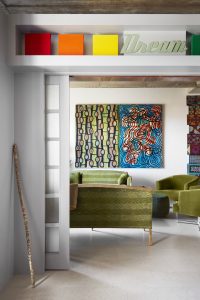
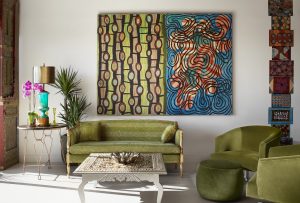


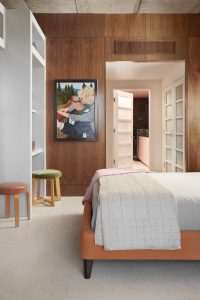

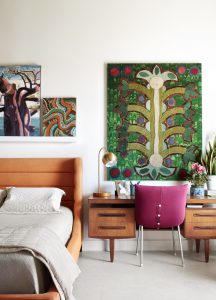
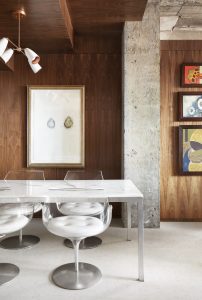
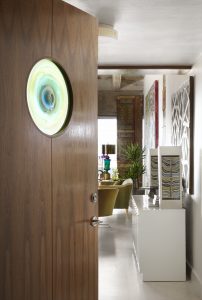
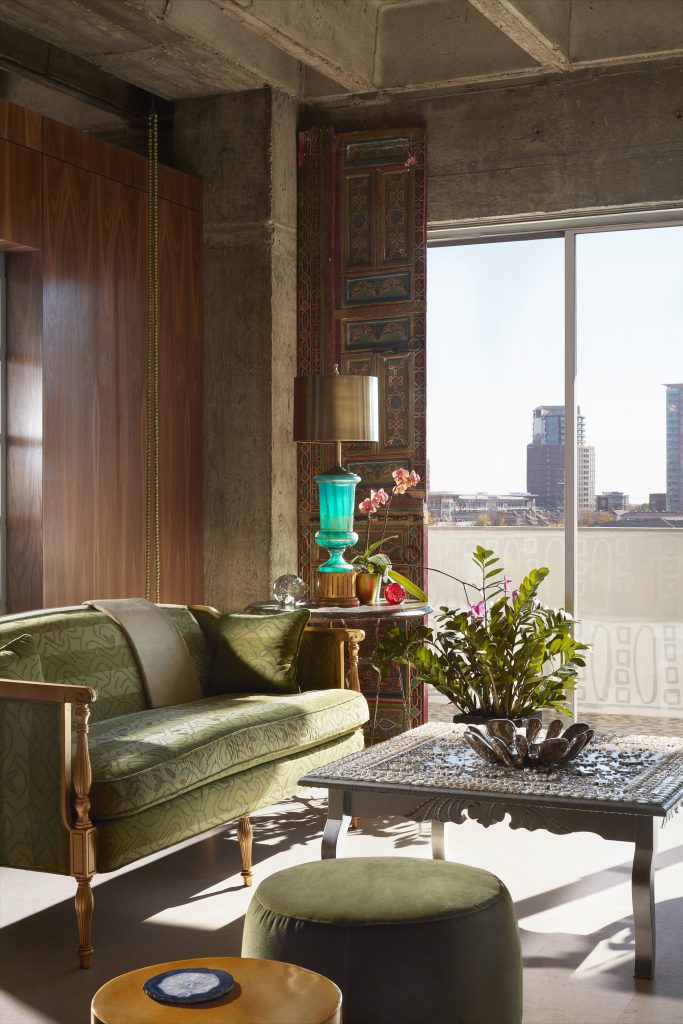
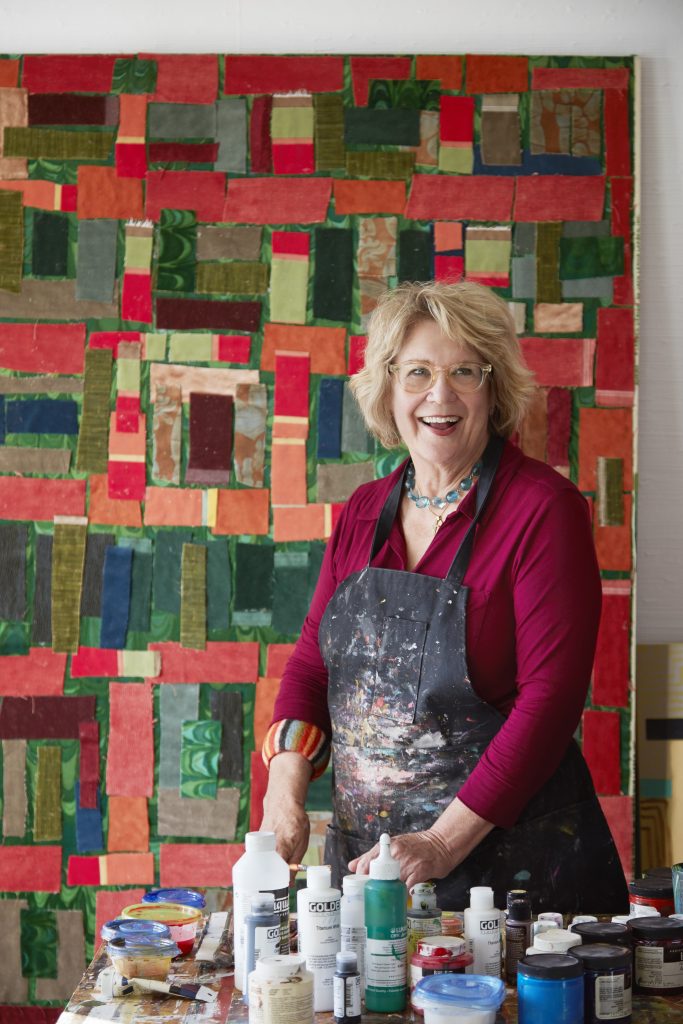
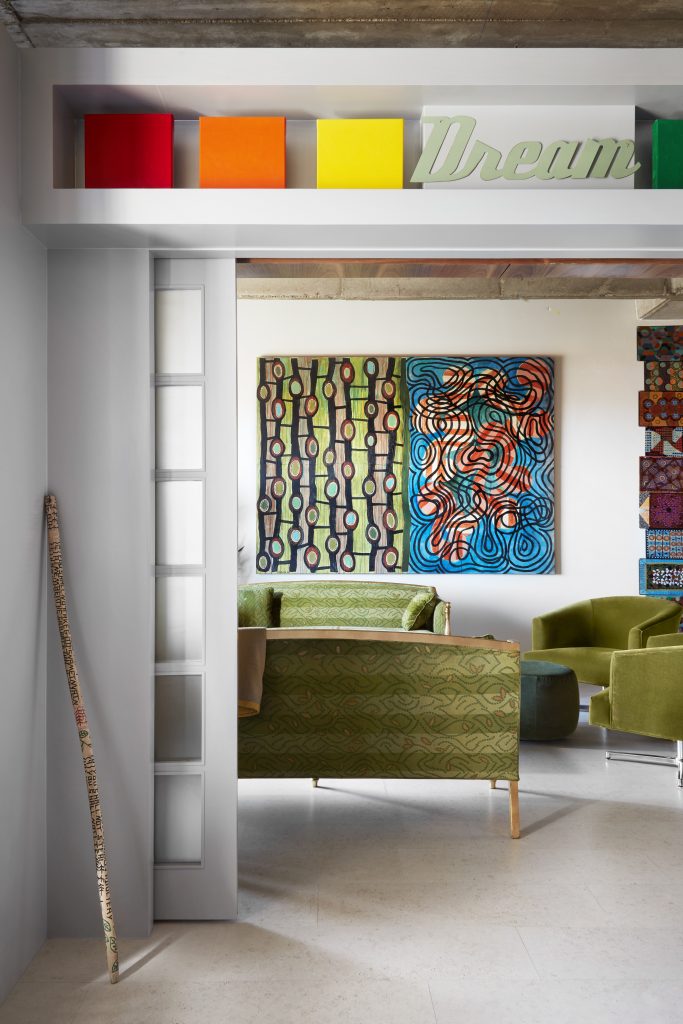
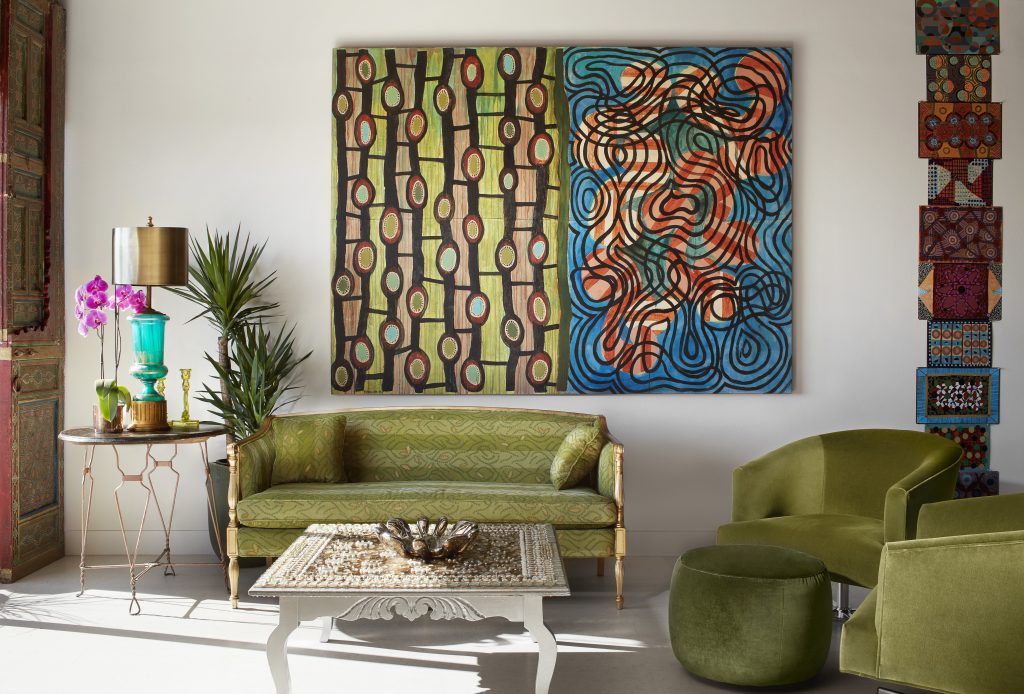

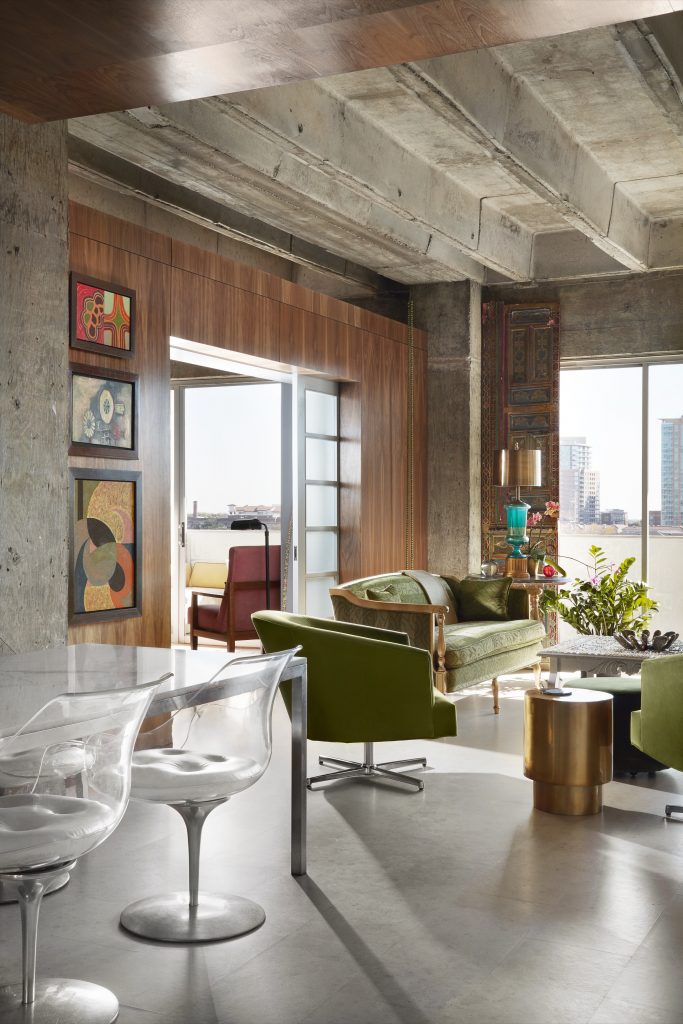
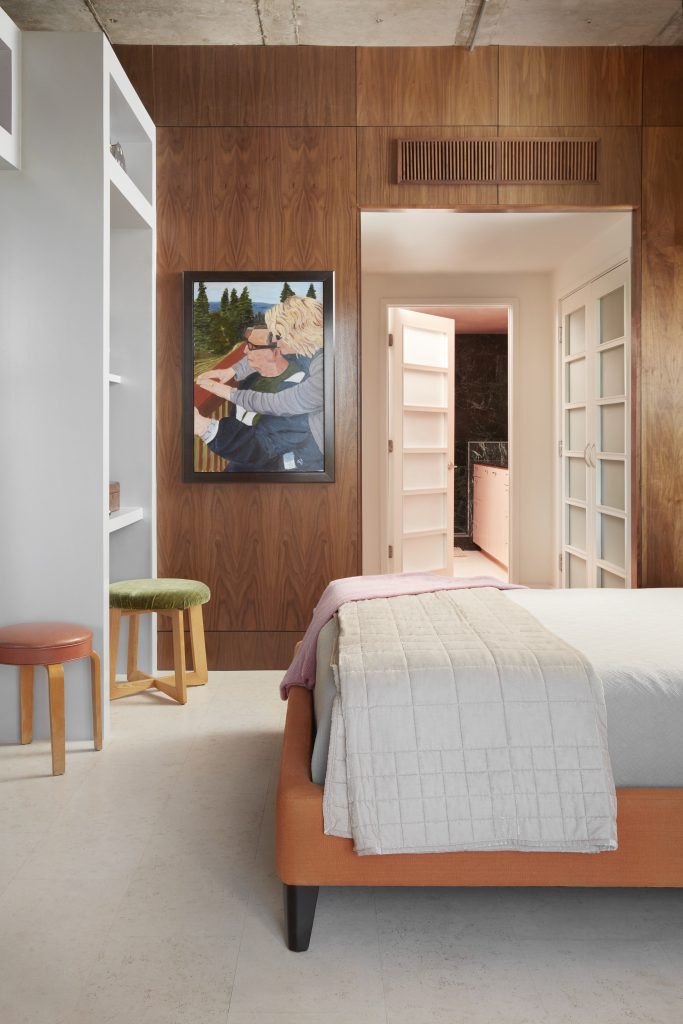



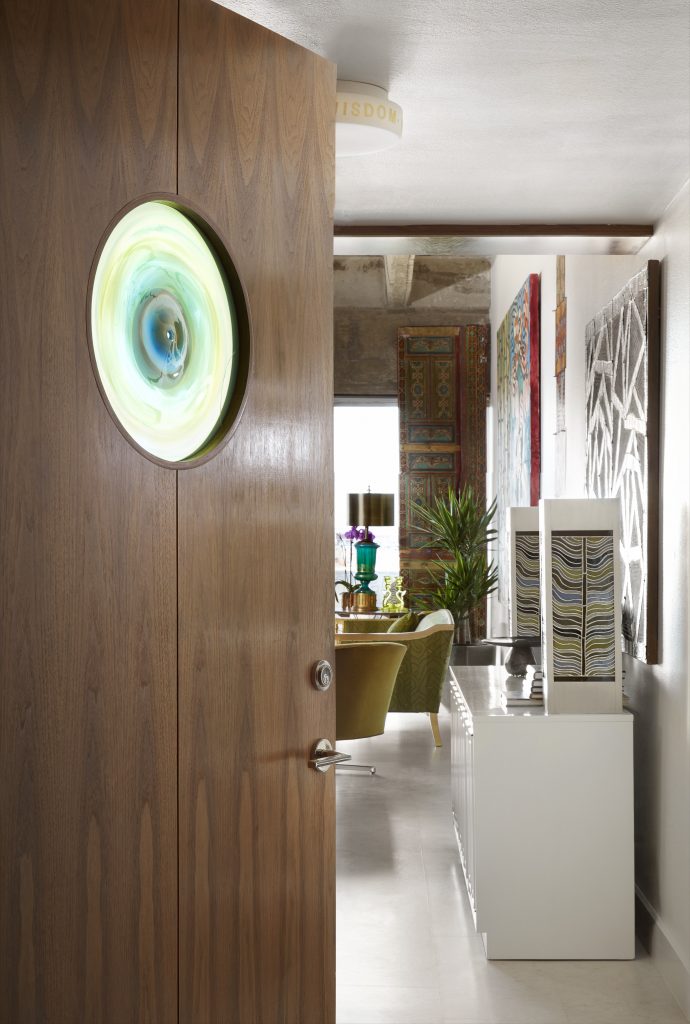


_md.jpg)



_md.jpg)










_md.jpg)





_md.jpg)








_md.jpg)







_md.jpg)

_md.jpg)








_md.jpg)







